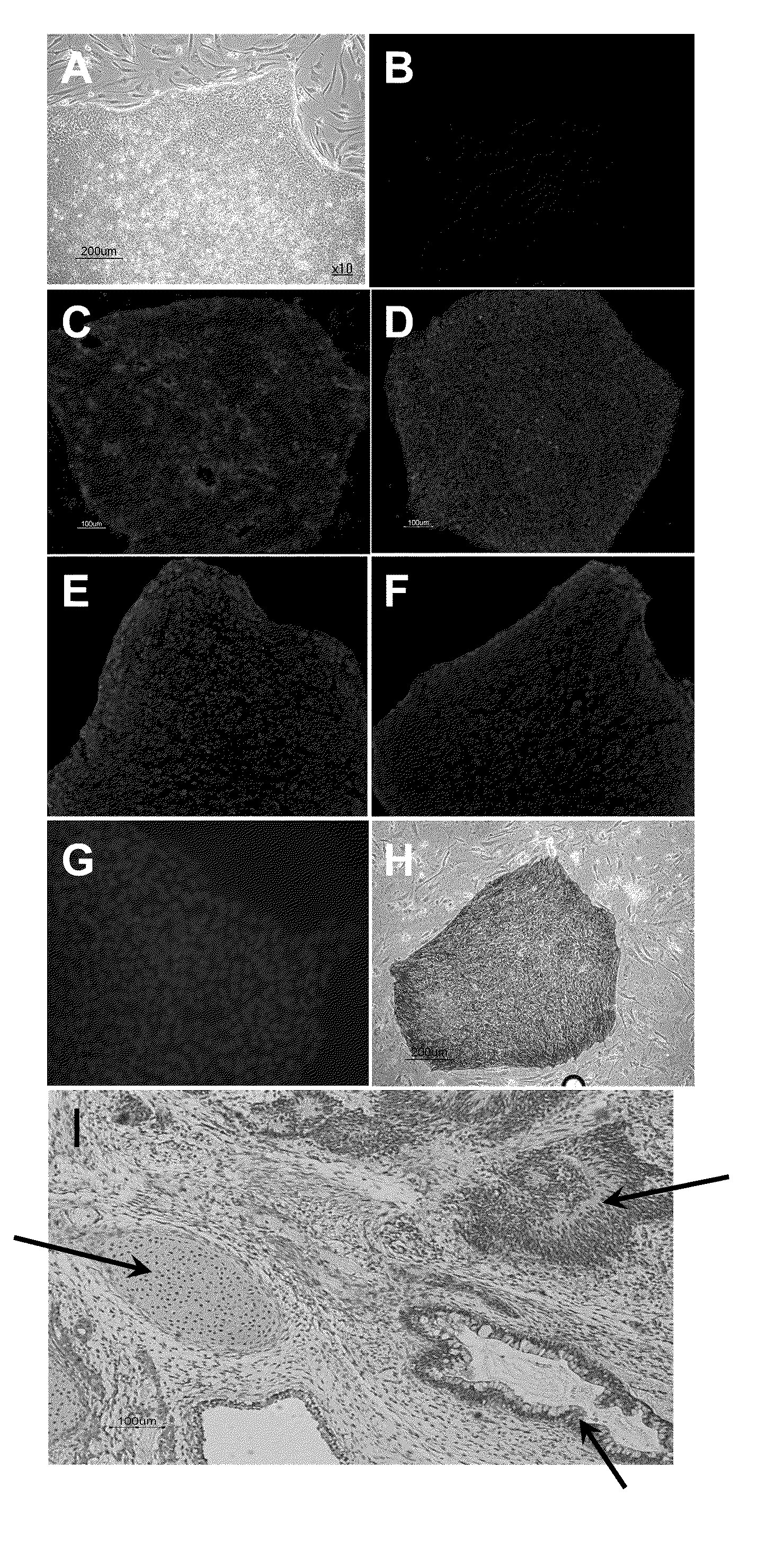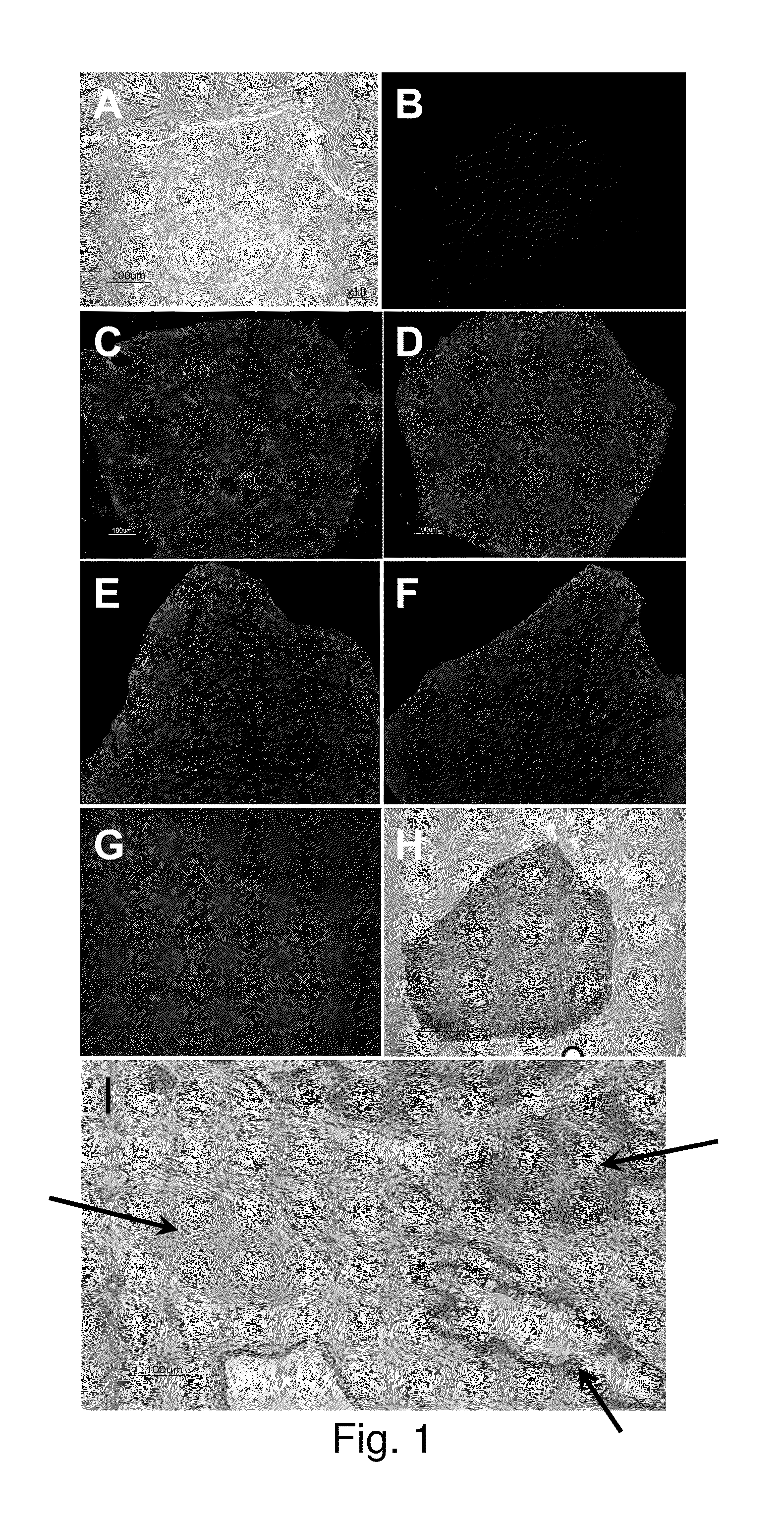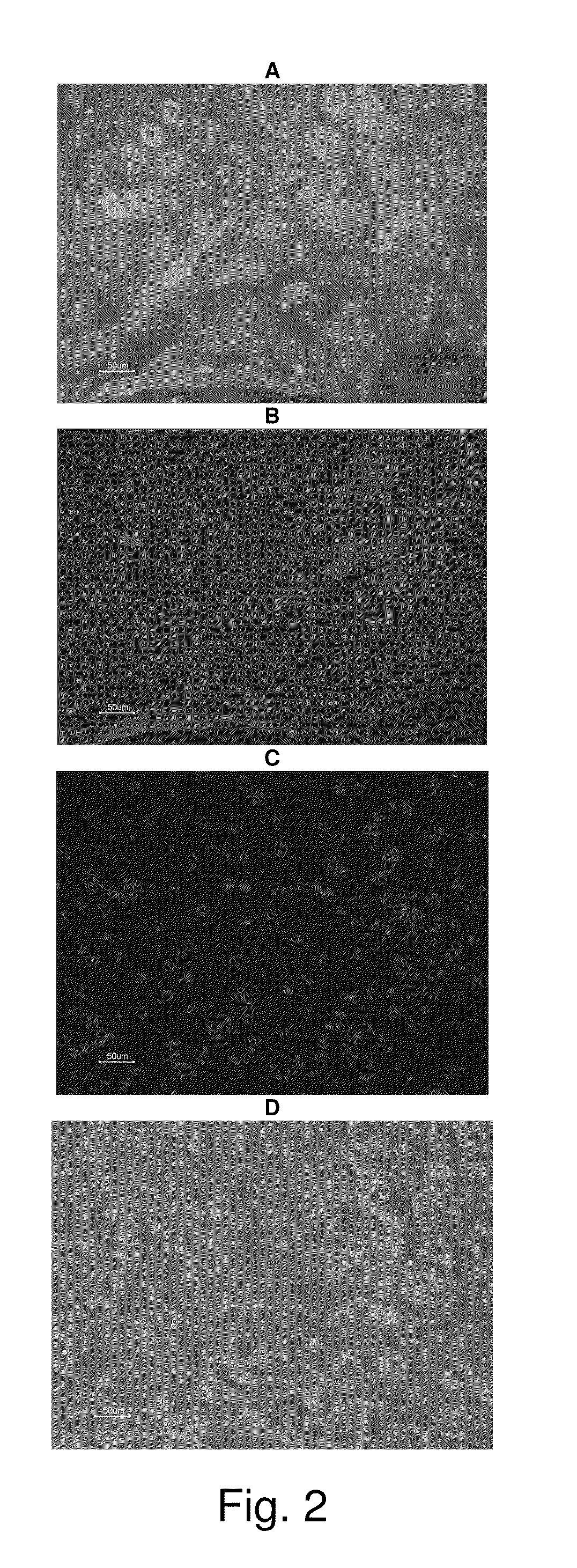NOVEL HEPATOCYTE-LIKE CELLS AND HEPATOBLAST-LIKE CELLS DERIVED FROM hBS CELLS
a technology of hepatocytes and hepatocytes, applied in the field of new hepatocytelike cells and hepatoblastlike cells, can solve the problems of many hepatoma cell lines, many transporter functions are rapidly lost and/or changed, and the effect of reducing the need for animal experimentation, facilitating elimination, and improving the predictability of in vitro testing
- Summary
- Abstract
- Description
- Claims
- Application Information
AI Technical Summary
Benefits of technology
Problems solved by technology
Method used
Image
Examples
example 1
[0324]Starting Material
[0325]The starting material for the present invention is suitably pluripotent undifferentiated hBS cells, such as undifferentiated hBS cell lines. Such material can be obtained from Cellartis AB and is also available through the NIH stem cell registry http: / / stemcells.nih.gov / research / registry / . Cellartis AB has two hBS cell lines (SA001 and SA002) and one subclone of SA002 (SA002.5) available through the NIH. In addition, 20 of Cellartis cell lines are listed in the UK stem cell bank.
[0326]Those hBS cell lines and in addition SA167 and SA348 from Cellartis AB have been frequently used in the present invention. Characteristics of the hBS cells recommended as starting material are the following: positive for alkaline phosphatase, SSEA-3, SSEA-4, TRA 1-60, TRA 1-81, Oct-4, negative for SSEA-1, telomerase activity, and pluripotency in vitro and in vivo (the latter shown by teratomas formation in immuno-deficient mice) (See FIG. 1.) (Methods and protocols as previ...
example 2
[0330]Protocols to Obtain Hepatocyte-Like Cells
[0331]Intrinsic Factor Protocol (Differentiation is Induced by Exposure to Intrinsic Factors Secreted to the Culture Medium)
[0332]a) hBS cells grown of mEF cell layers in IVF culture dishes (Falcon) are subject to differentiation under 37° C., 5% CO2, and 95% humidity for up to 40 days to obtain hepatocyte-like cells. The culture medium used (VitroHES™ [Vitrolife AB] with 4 ng / ml of human recombinant bFGF [Invitrogen] added) is changed between every 7 and 21 days, normally every 14 days by discarding approximately 1 to 2 ml of old medium and adding 1 to 2 ml of fresh medium. After between 18 to 30 days hepatocyte-like cells are isolated from the cultures using sharp micro capillaries or the Stem Cell Tool™ (Vitrolife AB) as cutting and transfer tools and the cells are then pooled for long term storage (frozen) or immediate use, or alternatively fixed and stained directly in the culture dishes or used as living cells for e.g. Cyp activit...
example 3
[0343]Characterisation with Hepatic Markers (see FIGS. 2, 3 and 4)
[0344]Hepatocyte-like cells display a morphology typical for hepatocytes, i.e. they have a polygonal cell shape, a large cell diameter (about 25-50 μM), are often bi-nucleated and tend to accumulate lipid granules. Furthermore, they express several markers described for hepatic cell types, e.g. Albumin, α1-Antitrypsin, LFABP, CK18, and HNF3beta. They no longer express Oct-4, a stem cell marker used for undifferentiated cells. Some presumably less mature hepatocyte-like cells still express the fetal liver marker AFP. These cells are preferentially found inside colonies of differentiating hBS cells. DAPI (4′,6′-diamidino-2-phenylindole dihydrochloride hydrate. Sigma Aldrich) as a control to visualize cell nuclei. (For CK18 expression in hepatocyte-like cells differentiated on Matrigel™, see FIG. 22.)
[0345]For identification of proliferative hepatoblast-like progenitor cells AFP, HNF4alpha, CK19, CK7 and EpCam were used....
PUM
| Property | Measurement | Unit |
|---|---|---|
| concentration | aaaaa | aaaaa |
| concentration | aaaaa | aaaaa |
| diameter | aaaaa | aaaaa |
Abstract
Description
Claims
Application Information
 Login to View More
Login to View More - R&D
- Intellectual Property
- Life Sciences
- Materials
- Tech Scout
- Unparalleled Data Quality
- Higher Quality Content
- 60% Fewer Hallucinations
Browse by: Latest US Patents, China's latest patents, Technical Efficacy Thesaurus, Application Domain, Technology Topic, Popular Technical Reports.
© 2025 PatSnap. All rights reserved.Legal|Privacy policy|Modern Slavery Act Transparency Statement|Sitemap|About US| Contact US: help@patsnap.com



